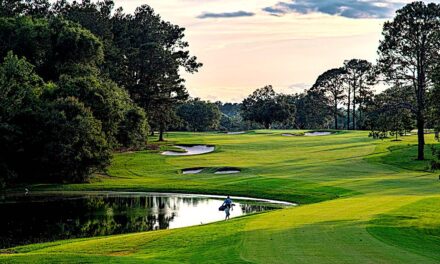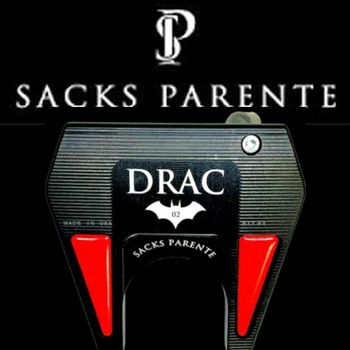When Henry Flagler developed his railway along Florida’s east coast in the late nineteenth century, he ushered in a period of development that would transform the state. His planned terminus was Palm Beach, where America’s elite could spend their winters at his hotels, first the Royal Poinciana and in 1896, The Palm Beach Inn, which a few years later would be renamed The Breakers, having become synonymous with the crashing waves beneath the hotel’s Atlantic Ocean-view rooms. The Royal Poinciana closed during the height of the Great Depression, but The Breakers remains the mainstay of the luxury Palm Beach lifestyle.
The original hotel was destroyed by fire in 1903 and again in 1925, after which it was rebuilt to a design by New York architects Schultze and Weaver. Their vision for the hotel was inspired by the Villa Medici in Rome, and 75 artisans were brought from Italy
to paint the astoundingly ornate ceilings in the lobby and throughout the first floor.
The opulent hotel sets an incredibly high standard that guests will expect to also be met by its two great golf courses. One of those is a mere 10 miles west of the resort, The Breakers Rees Jones Course, was completely rebuilt in 2004 and stretches past 7,000 yards. Clearly satisfied with Rees’ work there, in 2018 the owners turned to Jones to explore the potential for the Ocean Course at the Resort, where the turf was reaching the end of its lifecycle, providing a sensible opportunity to re-evaluate the design.
The Ocean course has its place in history, with an original nine holes laid out by Alexander Finlay in 1897 making it the oldest layout in Florida. The brief for Jones and his associates was to create a modern functional course that would make the most of its small site and provide The Breakers guests with an experience fit for those high expectations set by the Resort.
The course’s property is bisected by two entry roads, creating four quadrants, each comprising four or five holes. This meant there was little flexibility with the routing itself, so Jones’ focus for the redesign was to maximize the golf that could be delivered.
“We wanted to show that you can create a great golf experience on a compact site,” says Rees. “And wanted to provide the golfers with an enjoyable round while also being able to challenge the better golfer.”
Perhaps counterintuitively-one might expect features on a small limited plot of land to be scaled down, but not Jones, who increased the total acreage of greens by almost 50%. The larger putting surfaces have sweeping undulations and allow the grounds crew the ability to set demanding pin positions if they want to raise the level of challenge. Keeping the Resort players in mind, each green is accessible with open fronts for run up shots.
Each of the greens, which are varied in depth, shape and size, have slopes which serve as a backstop making them unlike any other Florida golf courses. As well as giving the layout a unique and memorable identity, the backstop helps keep overhit shots on the putting surface while encouraging an imaginative short game from behind the greens. With some hole locations, golfers will have a compelling alternative to aiming at the flag.
Many of the changes introduced with the renovation will free-up resources for the maintenance staff. For a start, all turf on the golf course has been converted to Seaside Paspalum, except the new TifEagle Bermuda grass greens with collars of TifGrand to prevent cross-contamination-which means the course no longer has to be overseeded.
Bunkering has been reduced considerably-to about two-thirds of the previous total. Those that remained are all strategically placed where cautious players might opt for a long iron versus driver. With sparkling white sand flashed up the front faces, the bunkers are all visible and quite imposing from a distance. But that is something of a deception- they are not as deep as they appear, making recovery fairly straight forward. They have been lined with Capillary Concrete, and Mark Reid, the Director of Grounds, says this is cutting between 100 to 200 man-hours after every storm because of no washout to date.
Jones and his team have added a little yardage to the par 70 layout taking the distance to just shy of 6,000 yards. There are four sets of tees with the forwards a little over 4,000.
Holes of note include the sixth, a 383 yard par four that wraps around a lake and provides a heroic approach to what appears to be a slither of a green. The tenth takes golfers to a particularly tranquil corner of the course and a glimpse of the Atlantic from the newly raised green. The 197 yard, 16th is perhaps the most challenging where right or long will find water.
One of the highlights of the Jones redesign is its impact on the property. The entire eastern segment of the site was raised, meaning that golfers on each side of the entry road can see across the course, cleverly tying the quadrants together. Selective tree removal also helped open up vistas bringing the outside in and the inside out. Locals can now see right into the course, while golfers can admire some of the charming buildings beyond the perimeter, like the colonial style Royal Poinciana Chapel behind the sixth green and the grand Flagler Museum behind the fourth.
The quality of the finishing hole is truly exceptional which is the case on most every Rees Jones course I have written about. With credit to Reid’s wizarding skills, his team led by Ocean Course Superintendent Justin Gille, the surfaces are pristine and the detailing, from tee boxes to bulkheads, is flawless. Jones did not import artisans from Italy, but he delivered a golf experience worthy of the finest resort in Florida, The Breakers.












